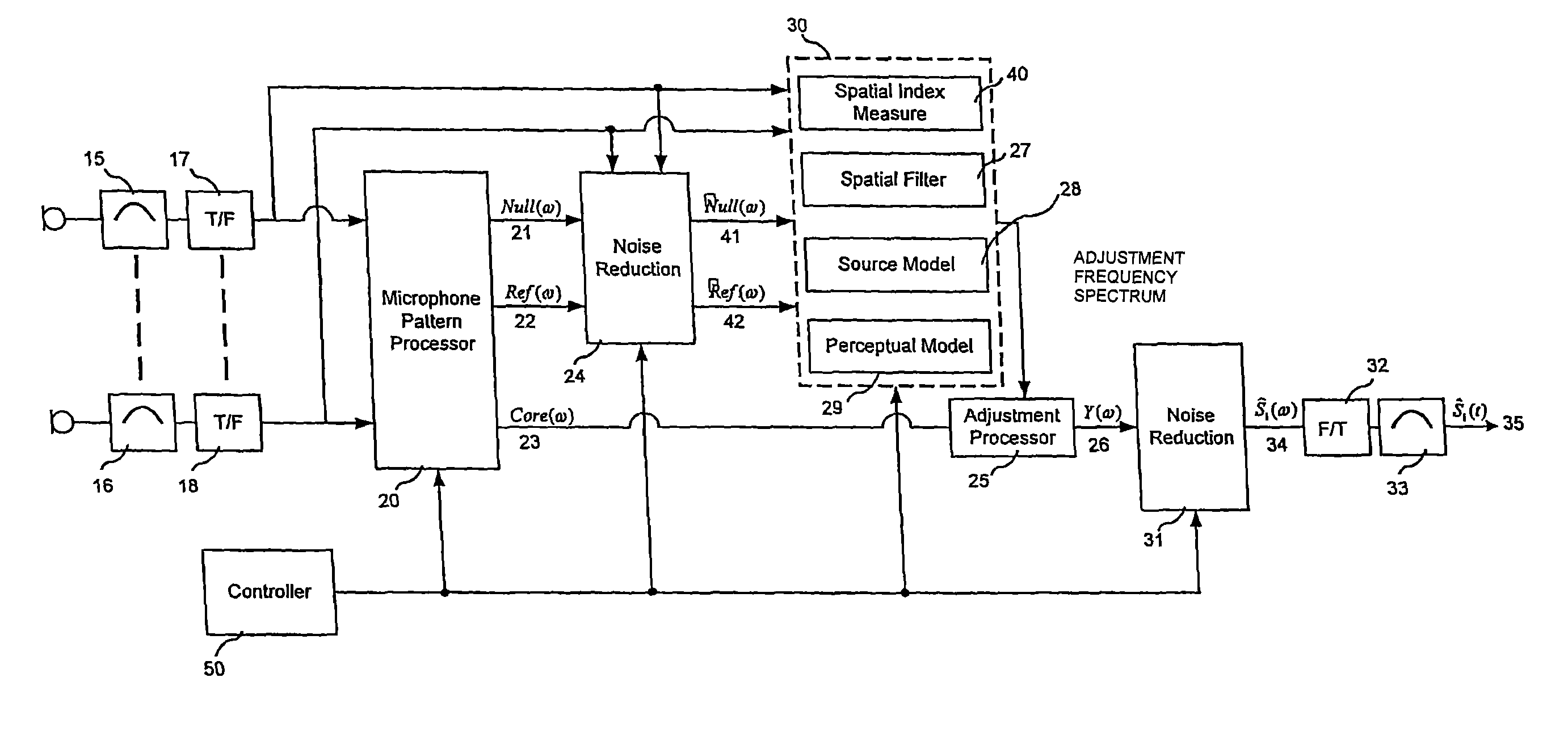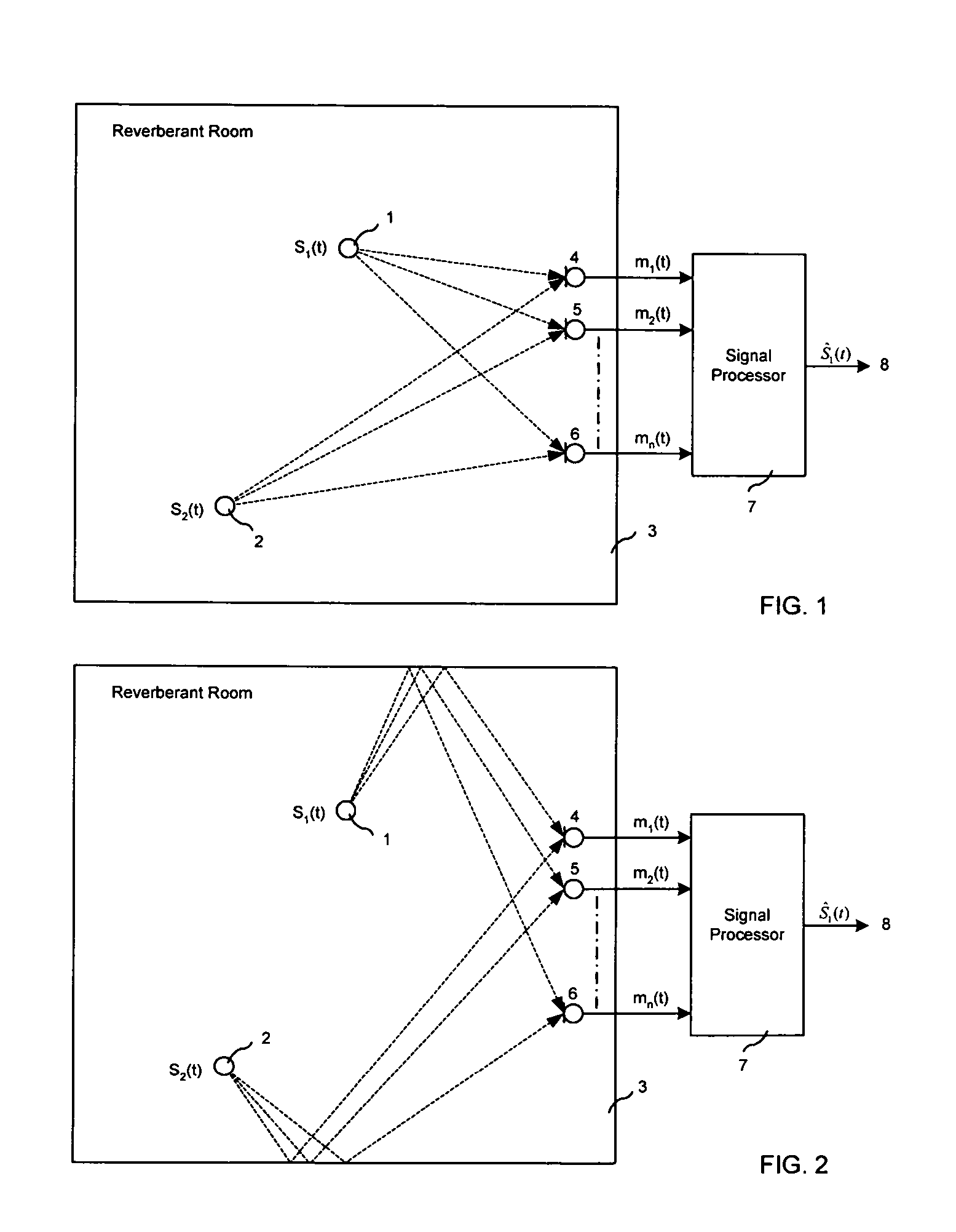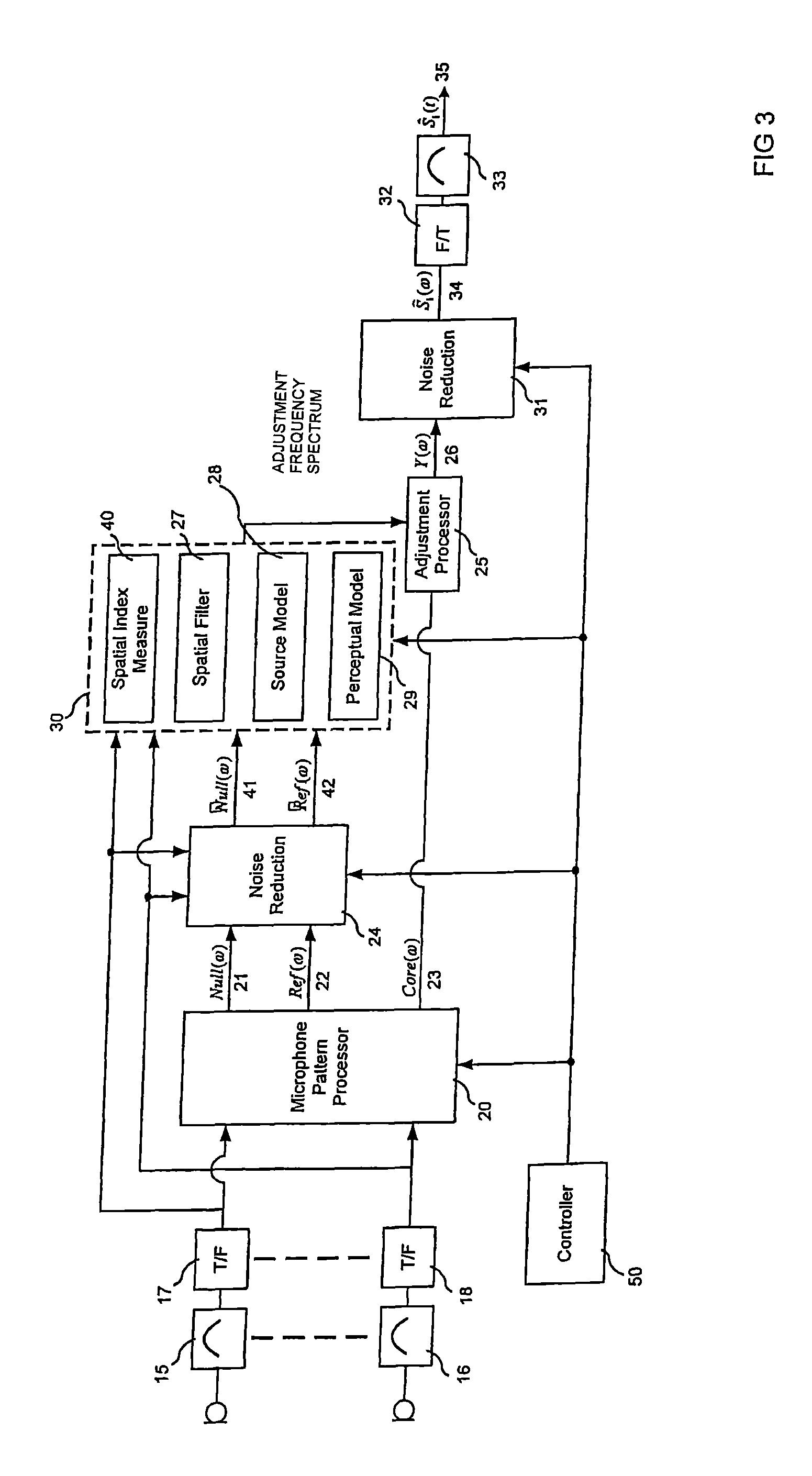System for selectively extracting components of an audio input signal
a technology for audio input signals and components, applied in the direction of transducer casings/cabinets/supports, loudspeakers, electrical transducers, etc., can solve the problems of reducing the ability to selectively extract the desired signal, limiting the possible range of measured values, etc., to achieve accurate generalized energy fraction measurements, reduce the frequency of modifying the core microphone signal, and reduce the effect of modification
- Summary
- Abstract
- Description
- Claims
- Application Information
AI Technical Summary
Benefits of technology
Problems solved by technology
Method used
Image
Examples
embodiment
Preferred Embodiment
[0047]The following describes a preferred embodiment for picking up and isolating a sound source that is located relatively close to the microphone array. This would be the case in numerous applications including telephones, communications headsets, microphone systems for public address systems, and karaoke microphones.
[0048]In describing this embodiment it is assumed that an array of two microphones, Mic161 and Mic262 are being used and their placement with respect to the desired sound source s(t) 63 is as shown in FIG. 4. The desired sound source s(t) is located along the axis that passes through Mic1 and Mic2. The direction of s(t) with respect to the microphones will be considered as 0 degrees, and the distance from s(t) to the point midway between Mic1 and Mic2 will be referred to as D. Other undesired sound sources are located at angles other than 0 degrees and / or they are located at some distance other than D.
[0049]In this embodiment, the two microphones M...
PUM
 Login to View More
Login to View More Abstract
Description
Claims
Application Information
 Login to View More
Login to View More - R&D
- Intellectual Property
- Life Sciences
- Materials
- Tech Scout
- Unparalleled Data Quality
- Higher Quality Content
- 60% Fewer Hallucinations
Browse by: Latest US Patents, China's latest patents, Technical Efficacy Thesaurus, Application Domain, Technology Topic, Popular Technical Reports.
© 2025 PatSnap. All rights reserved.Legal|Privacy policy|Modern Slavery Act Transparency Statement|Sitemap|About US| Contact US: help@patsnap.com



